UMontana Public History Program
projects
Spring and Summer 2025 Public History Internships
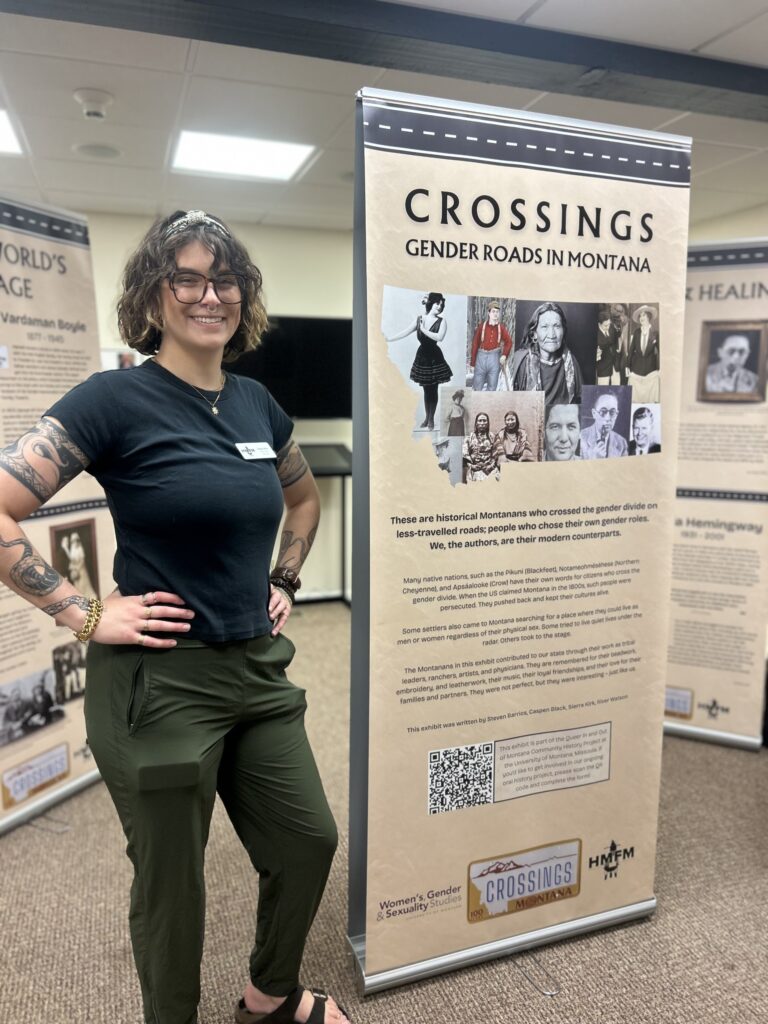
During the spring and summer of 2025, eight students participated in public history internships across the state. Through each experience, these students gained valuable skills that will serve them well in their future careers, while also enjoying their work and…
Queer In and Out of Montana Community History Project
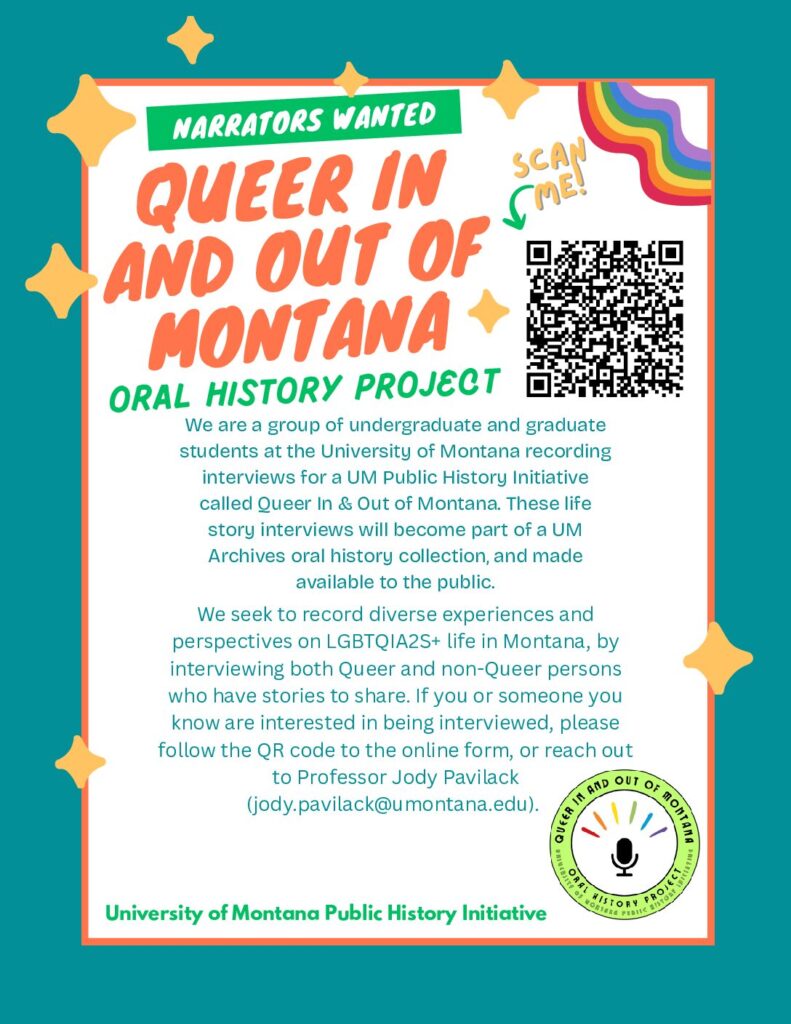
University of Montana faculty, students, staff, and alumni are collaborating with community organizations including the Western Montana LGBTQ+ Community Center, the Montana Two Spirit Society, TransVisible Montana, the Historical Museum at Fort Missoula, the Montana Historical Society, and Humanities Montana…
Griz Nation Oral Histories
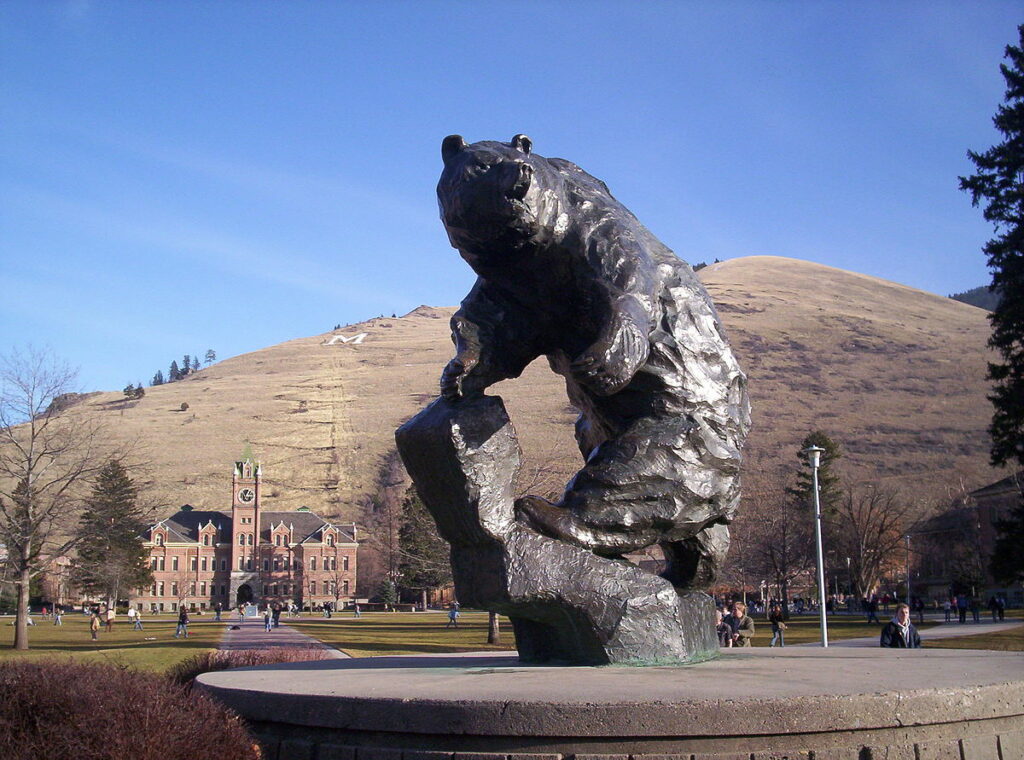
In Fall 2024, a team of undergraduate and graduate history students at the University of Montana launched an oral history project exploring the powerful ties between UM sports, its fans, and communities across Missoula and Montana. Guided by Professor Jody…
news
Women Prison History Exhibit
Public history student Rebecca Maine has co-authored a new digital exhibit for the Montana History Portal that explores the history and experience of female inmates living in a Montana prison system designed for men. Check it out here: “Built Without Her In Mind.“
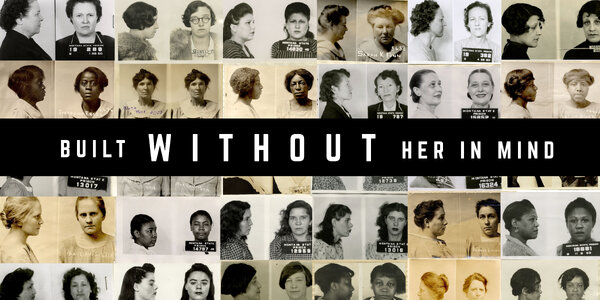
Meet Gus!
Public history student Rebecca Maine recently completed an internship with the Montana History Portal, where she created a digital exhibit on Gus: “The Largest Western Larch Tree in the World“!
Located near Seeley Lake, Montana Gus has stood through centuries of change, from Indigenous stewardship to the rise of the timber industry and modern conservation efforts. Rebecca’s exhibit explores how one remarkable tree connects Montana’s environmental and cultural history.
Yukio Shimomura talk
Please join us Thursday, October 23 at 7pm for a presentation by Yukio Shimomura, who will share his family’s powerful story of incarceration in War Relocation Authority camps during World War II. This event is co-sponsored by the UM History Department and the Historical Museum at Fort Missoula. Social Sciences Building room 356.
